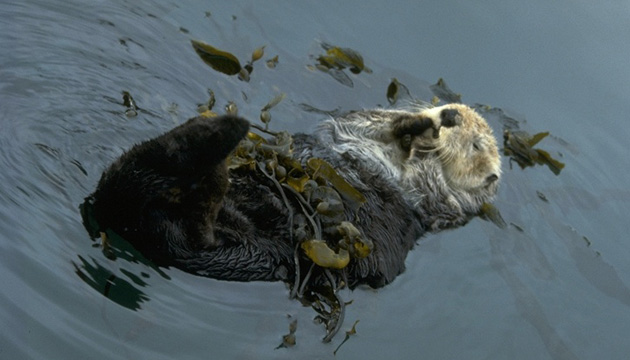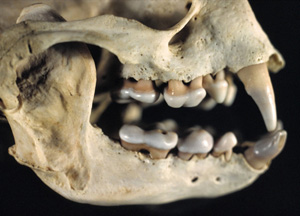
Adorable sea otter souvenirs—sweatshirts, posters, plush toys—abound in central and Northern California. There’s even an otter on the bag of coffee beans in my kitchen. They’re local icons, and with a face like that, it’s easy to see why. But sea otters themselves are not so plentiful. In honor of Sea Otter Awareness Week at the end of September, I’m taking a closer look at what’s behind that furry façade.
Most southern sea otters (Enhydra lutris nereis) live along the 150 miles of coastline between Santa Cruz and Pismo Beach, and are federally classified as threatened. They are considered a keystone species in kelp ecosystems like those in Monterey Bay because they prey on invertebrates like urchins, which, left unchecked, could decimate the kelp beds many fish depend on for habitat. However, not all otters eat the same thing.

At San Nicolas Island in southern California, where a small population of otters was reintroduced in the late 1980s, otter diets are very consistent across individuals. But among central California sea otters, where the population is denser and food is scarcer, otters tend to specialize in a particular food source like snails, crabs, or purple urchins. One of the questions ecologists hope to answer, now that they understand this differentiation, is whether there is a link between specialized diets and infectious disease.
The U.S. Geological Survey just issued its spring census report, which shows that the population of southern sea otters has increased about two percent since 2010, reaching 2,792. For a species that was presumed extinct in California until a group of less than fifty was rediscovered in the 1930s, this is certainly progress. But their population growth seems to have reached a plateau, and the contributing factors are a complex puzzle.
While the otter population did increase slightly, so did the mortality rate. In 2011, scientists documented a record high of 335 stranded sea otters, and made an effort to examine each one to determine what led to their injuries or deaths. One of the most surprising findings was that “tasting” bites from sharks accounted for 30 percent of sea otter deaths, up from 8 percent in the 1980s and ‘90s. Other otters, ironically, perish while mating. (Male otters are very aggressive, and have been known to inflict fatal wounds or drown their mates in the throes of passion.) Additional causes of death seen year over year, including infectious diseases, parasites and harmful algae blooms, can be attributed to human activity.